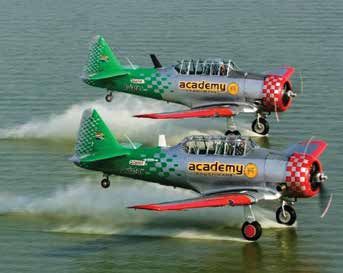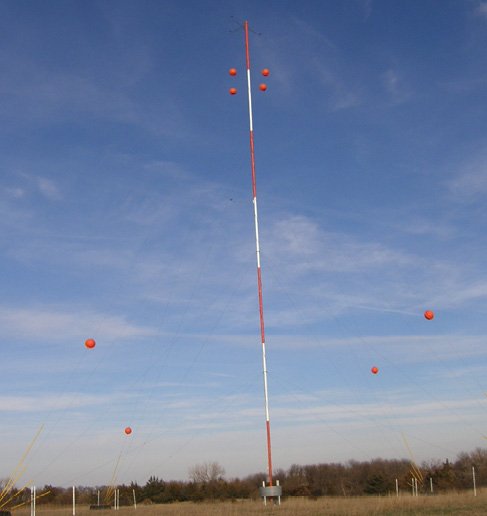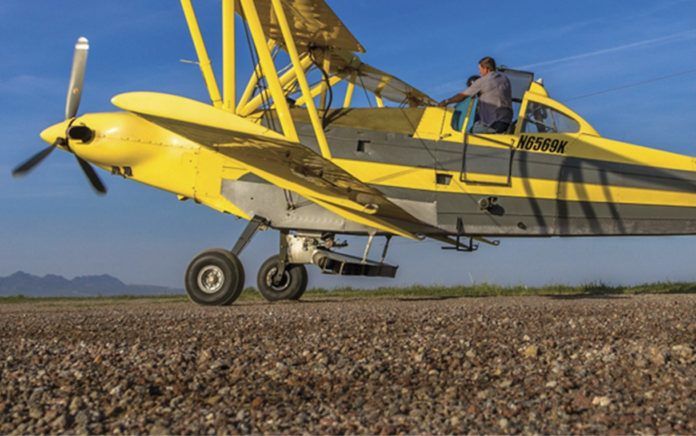The old stereotype of crop dusters—excuse me, aerial applicators—is that they are scofflaw daredevils, perhaps with behavior issues. That caricature is a relic of the past, when an enterprising farmer would buy a $300 war-surplus Stearman, put a hopper in the front cockpit and fly the plane hard until it broke. It follows that some might think ag pilots are an unlikely source of safety wisdom, and have fallen far behind aviation’s cutting-edge technology, but the truth is quite different.
With the conversion from piston to turbine engines nearly complete—today, more than 90 percent of the fleet is turbine-powered—the modern ag aviation industry is dominated by $1 million-$3 million aircraft equipped with sophisticated GPS systems. The industry safety record and culture have improved markedly, with accident rates reduced by half since the 1990s. Pilots are often recruited from professional aviation programs. There is no room for daredevil pilots with accident or violation records, because they are simply not insurable.
The Environment
During the height of the U.S. ag flying season (which varies depending on the part of the country you are in), modern ag pilots and their aircraft are pushed harder longer than perhaps any others. Operations are so demanding, they require the equivalent of a full-time pit crew to perform necessary maintenance and preparation. Loaders assist with fuel, seed, fertilizer or chemical loading while maintenance crews ensure the machine is up for a hard day of flying. If the plane isn’t flying over a customer’s property dropping the goods, no one is making money.
An average work day in the busy season is intense. It will include dozens of takeoffs and landings from mostly dirt or gravel strips, takeoffs usually at max gross, and landings often with a tailwind, both to minimize ground time lost to back-taxi operations and to save the headwind for the max gross takeoff. Typical in-flight turns are 70-80 degree, 3G affairs. There are hundreds of them per day. And the money-making part of the work is done at 100-200 mph, six feet above ground, often over a field bounded by wires, buildings and tree lines.
Do modern ag pilots have any advice for those of us in more pedestrian general aviation backgrounds? Yep, plenty.
Importance of Preflight
“Each morning, you must assume the plane is coming out of maintenance,” said Cade Boeger, a 9100-hour pilot who started his professional career in the flight levels working for Part 121 regional airlines, and for the past decade makes a living closer to home as an ag pilot. At sunrise, he knows he will be in the same plane running at maximum continuous power until sunset.
“I take the first pre-flight of the day very seriously. It is my best chance to prevent an issue from ruining my day. The first inspection is critical and with me, it is thorough,” he told us. “Most general aviation pilots do not take preflights as seriously as they should,” added Boeger, who is also CFI in the off-season. It is one of the most common errors he sees in GA pilots.
At the end of a day of near-continuous operations, Boeger said you can almost guarantee the plane will have maintenance done overnight, which must be inspected by the pilot the next morning.
Poorly tuned stick-and-rudder airmanship is another thing Boeger said he commonly sees in GA pilots seeking flight reviews. Because most GA flying involves underpowered planes making shallow turns, he believes stick-and-rudder skills often suffer due to lack of meaningful exercise, something he said you never see in ag pilots. “You can fly many light tricycle Pipers and Cessnas with your feet flat on the floor,” he said. “In ag aviation, if you keep your feet off the rudders, you will die. It is that simple.”

Alaska Bush Wheels—those large-diameter, low-pressure tires you often see on bush airplanes—were developed for a particular type of flying. The hint is their name.
“I am not saying there is anything wrong with bush wheels. They make sense in Alaska and for a particular type of flying,” said Parker. “But now they are everywhere, from the deep south to the midwest, and throughout the mountain west.”
Parker sees them as a trigger for safety issues because pilots feel a need to put them to the test and to show off in videos. “I know in many cases there are responsible and safe pilots doing this,” says Parker, “but just as often, low-level flying videos are just evidence of illegal or unsafe flying.”
Parker participates in numerous backcountry and big-tire aviation online communities where he commonly sees videos of pilots flying low-level over rivers, lakes, and fields, including many of pilots water-skiing a plane like they do in Alaska. “It makes me cringe,” said Parker. “I don’t want to be the fun police and tell people flying low is illegal, because it can be done both safely and legally,” said Parker. “But you have to stay clear of congested areas. And if you have a passenger on board, it can quickly cross the line into careless and reckless behavior.”
Parker points out that mimicking the maneuvers of pilots who fly in sparsely developed Alaska doesn’t translate well to the Lower 48. “In Alaska, it is common to perhaps ski the plane a bit and land on gravel bars, but Alaska doesn’t have a lot of infrastructure or development, not anywhere near as many power lines and towers, and it largely remains that way. It is very static.”
In contrast, infrastructure in the Lower 48 is constantly changing. “You may have a perfect gravel bar to land on in Texas or Kansas. Then a subdivision goes in, and the power company puts a new line across the river. One week it is clear; the next week there is an obstruction.”
The Wired Environment
Taking low-level flying a bit too lightly, meanwhile, is the biggest pet peeve for George Parker III, a third-generation pilot and second- generation ag pilot with 20,000 hours, more than 15,000 of them as an ag pilot.
“We work in the wire environment,” said Parker. “I have hit them when I know where they are, know how to see them, and am actively looking for and trying to avoid them.” He has had two wire strikes. “That is one wire strike for every 7500 hours of low-level flight.” Both times, Parker was able to fly the plane back to base after hitting wires.
A 9000-lb Thrush or AgCat has wire cutters on the main gear and guides that push wires over the tail so it won’t get sliced off. Other general aviation aircraft don’t do as well in wire encounters.
“There are always a few examples where pilots get lucky,” said Parker. “But in general, wires will slice the plane in half, typically resulting in fatalities.”
Pilots flying low over rivers often haven’t scouted the route for wired hazards, and they certainly aren’t prepared for a watery crash. “It is hard enough to open the door of an upside-down crashed airplane,” said Parker. “Now wrap it in wire and toss it in a river. If the door is on the upstream side of the current, it is not going to open.
“The sad thing about wire strikes is that they happen every year, they are usually fatal and are almost entirely avoidable,” he added.

The FAA does not require towers topping out below 200 feet to be marked. As a result, rapid infrastructure build-outs of cell phone communication towers tend to be 198 feet, just out of reach of FAA regulations. By federal law, they don’t need to be marked or mapped.
Parker became an activist to change that at the state level. “When I was lobbying to get our state to mark towers, I first started with the companies putting them up,” said Parker.
“MET towers used for citing wind farm potential cost a few thousand dollars to build and if you require markings on the towers and support wires, you are increasing their cost and calling attention to a potential wind project. They simply weren’t interested in doing that voluntarily. I could argue my life is on the line, but they did not view that at as their problem,” he added.
Fortunately, state legislatures often agreed with Parker, and a few dozen states now require MET towers, at least, to be mapped and marked. “The communication lobby is more powerful and often gets some wide exceptions, so there are still risks from unmarked towers, but it is better.”
Scouting before dropping
Wires are not the only hazard when flying at low levels. Towers, trees, buildings and congested areas can literally appear almost overnight. A 50-foot MET (meteorological evaluation tower) can be erected in six hours. Farmers regularly stick 10-foot-long pipes with crop monitoring or survey instruments in their fields. Ten feet may not seem like much, but if you are flying at six feet agl, it is four feet too high.
“I may have been to the same field a dozen times already, but each time I scout it like it is the first time,” said Boeger. He described circling 150 feet above a field he had been to many times already that season. It was clear of obstacles, but while circling, he almost ran into a newly placed communication tower in the field next door. “I caught it while glancing forward momentarily. I thought I was safe at 150 feet, and just worried about stuff at 10 feet in my target field. It was a lucky catch. You can’t be too careful.”
Other Low-level Aircraft
If wires, towers and trees aren’t enough, ag pilots also have to keep an eye out for other low-flying aircraft. “I was spraying a field near a MOA [military operations area], pulled up to clear wires and found myself splitting between two F-15s traveling at high-speed in tight formation,” said Parker. “One passed in front of me and the other behind.”
Low-level military training routes are on the charts for a reason. Encounters like this are not uncommon, and can range from military helicopters, A-10s, F-15s, -16s and -35s. “If there is a military base, MOA or military training route anywhere nearby, there is an increased chance for an encounter.”
Aviation fly-ins create traffic as well. Parker said his professional colleagues throughout the Midwest always have encounters as pilots stream to and from Oshkosh at crop duster altitudes. “I totally get how fun it is to fly right above a field or to fly low in formation,” said Parker. “Even with passengers aboard, it isn’t necessarily careless and reckless because you can safely put the aircraft down at any time. But you can easily encounter an ag pilot at your same altitude, even if your altitude is 10 feet over a field.”
Just because you are flying low doesn’t give you a pass on keeping an eye out for traffic. Just off the deck can be busy airspace.
Physical Health
“Before the season begins, I watch what I eat and start hitting the gym,” said Boeger. “If I am not prepared, the beginning of season takes a much heavier toll.” When the season hits, ag pilots go from very little flying to doing hundreds of 3G turns in days that can run up to 14 hours, often in triple-digit temperatures. A 9000-pound AgCat is heavy on the controls, which makes the job of flying it even more physically demanding.
During peak season, Boeger focuses on getting as much rest as possible, eating well and staying hydrated. Hydration, mental performance and fatigue go hand-in-hand. “If I am not peeing once every few hours, I am not drinking enough to perform.
“You have to be at peak physical performance to survive the busy season. You also have to know when it is time to quit either due to physical fatigue, mental fatigue or sleep deprivation. The head game is a big part of safety.”
While most pilots do not experience the type of physical demands faced by ag pilots, I know the physical and mental demands of single-pilot IFR leave me exhausted. Being physically fit, well-rested, well-fed, de-stressed and well-hydrated gives you a safety edge.
Flipping The Switch
Ag aircraft are equipped with a lever for releasing the load. It is also known as the money handle. “I get paid by the acre. If the money handle isn’t forward, I am burning time and money,” said Boeger. There is no way around the pressure to perform. There is a reason the busy season is busy. Everything happens at once. As soon as an ag pilot finishes one field, there is another one on the schedule, and it goes on for the better part of three months in the California rice fields.
Rice planting season in California’s Central Valley is often called “Rice Wars” due to the hundreds of aircraft taking to the skies, from dawn to dusk in thousands of sorties, to apply fertilizer, seed and chemicals. Each day begins with a goal to hit specific fields and cover a specific amount of acreage. If winds are too high or too calm, the backlog grows. The pressure to complete a job is immense.
“It is tempting to press on, try to do one more pass or just finish the field,” said Boeger. “You have to know when to make the call, either due to wind, fatigue or light. I call it flipping the switch.”
For example, the fuel and loader are typically at the downwind point of a runway. An ag pilot will land with a tail wind to pick up the load and depart into a headwind. At some point, the tailwind during landing causes the ground speed to be so high that it becomes difficult to get stopped safely before the end of the strip, which typically is blocked by a very big, very heavy truck. There comes a point where you have to flip the switch and land over the truck, into the wind, and accept the inefficiency of a back taxi,” said Boeger.
To flip the switch, you have to have preset points that define the options. You have to pre-ordain them.
“At the end of a long day, I know I might be able to do one more load or just press on a bit longer until the field is done,” said Boeger. “But once I flip the switch, I have made the decision. I am finished and I am heading back to the hangar.”
Boeger suggested all pilots would benefit by installing “switches” in their flights. He used scud running into deteriorating weather as an example. “When you create a decision point in advance, there is less hesitation to make a decision in the favor of safety.”
Knowing to Manage Risk
Boeger and Parker examine and manage risk as part of their job as ag pilots. Boeger keeps a photo of his wife and five kids in the cockpit to remind himself what matters most. It isn’t spraying the field or planting the seeds—it is coming home safely every night.
Parker suggests the same for pilots seeking the exhilaration of low-level flying. “Sure, you can water-ski those bush wheels or fly six feet off a river, but why? Are you putting others at risk, like passengers? Or neglecting to consider the people in houses, cars and boats who may also be at risk from your choices?”
There is a saying among ag pilots that if you kill yourself trying to do a job for a farmer, he likely won’t come to your funeral. The point is to always own your own decisions and not accept outside pressure, because in the end, the head game belongs to the pilot, not the external pressure. Pilots should know why they are making their choices, then have a plan to understand the hazards and mitigate the risks. The person who has to flip the switch is always the PIC.
Mike Hart is an Idaho-based flight instructor and proud owner of a 1946 Piper J-3 Cub and a Cessna 180. He also is the Idaho liaison to the Recreational Aviation Foundation.





this is the best and and most honest article about low level flying i have ever read. I flew ag planes for over 20 years and my mindset was very like this pilots, you must know when to flip the switch no matter how mad the farmer gets. I am 81 with over 50 years flying and still enjoy flying my 182.
Agreed, great article
A great article for even non-ag pilots. You have to know how to manage risk and the family is the most important reason you come back safely every time you fly. My desire to give my wife a “Honey, I’m home” kiss is my motivation to my safe flying habits.
:…including many of pilots water-skiing a plane like they do in Alaska”
Doing so is like ‘self-abuse’ in a house of ill repute: you can do it, but what’s the point…? (;>0)
Am Glad to here from you ,and I would like the online copy of the magazines,am an aviator from Kenya.rgds ,Anthony.